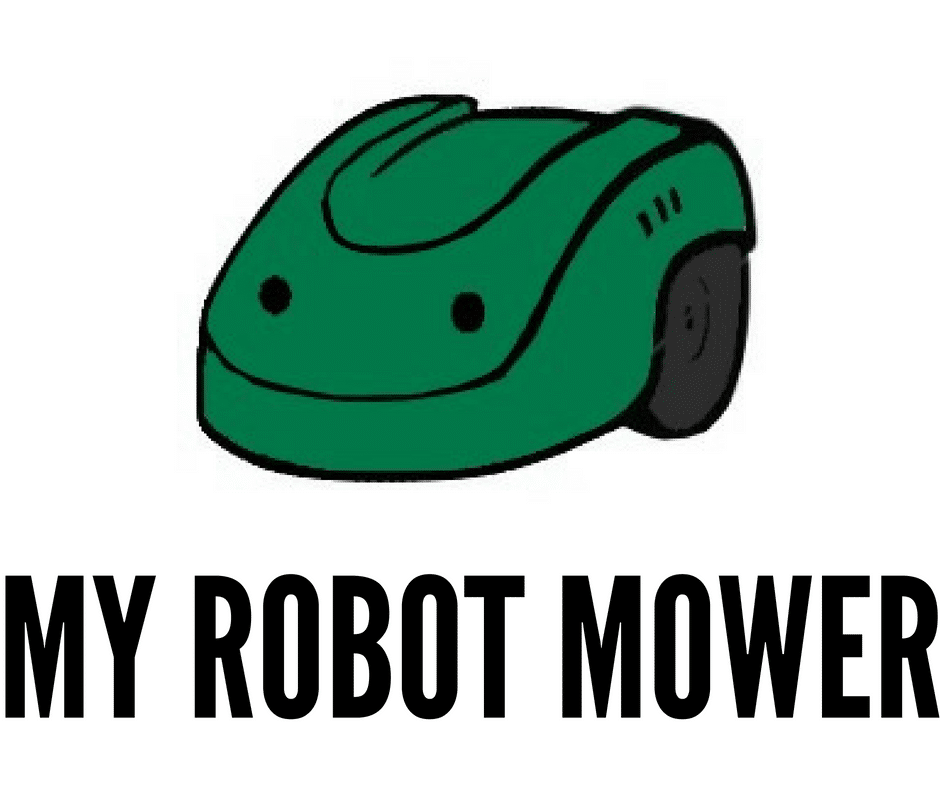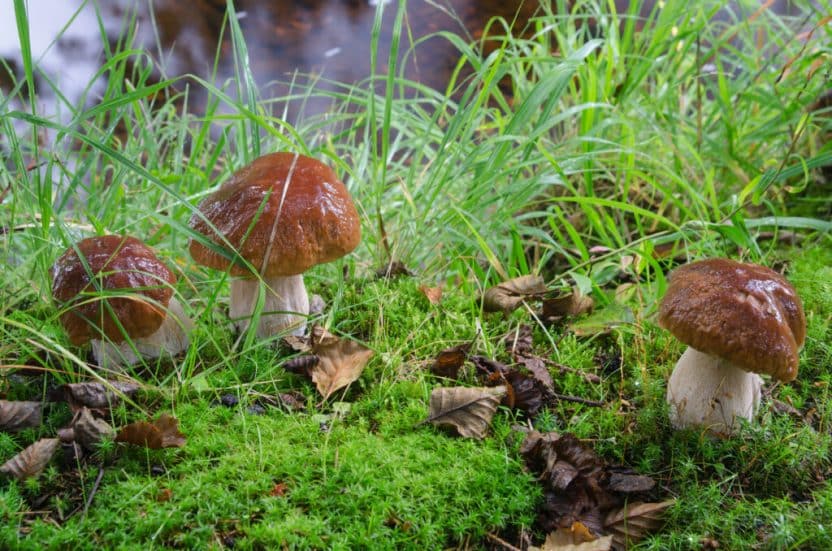Of all things growing in your lawn, moss is probably not one of the first things you think of. The question is, can the moss be left there, or is it going to wreak havoc on your lawn? Let’s find out.
Moss will not directly kill the grass, but moss tends to thrive in conditions that are less suited to grass growth. Moss growth can be indicative of a lawn having a soil or drainage problem, and while it may not be directly harmful, moss growth should prompt you to assess the health of your lawn.
By now, you’ll either want to dispose of all your lawn moss or start cultivating the stuff. To help you decide, here are a few helpful tips if you have moss growing in your yard.
Moss vs. Grass
As we have already established, moss will not necessarily kill your grass, but it can be a sign that your grass is not living in the healthiest conditions.
Do The Conditions That Moss Thrives In Not Suit Grass?
The answer to that question would be no. Moss usually grows in areas with a lot of moisture, which is fine if it is on a tree or in a swamp. If you happen to find moss growing in your yard among the grass seed, you most likely have a problem with your soil.
This could be anything from high or low soil pH, compacted soil, poorly drained soil, or poor soil fertility. It could also mean that your yard is not getting enough sunlight which will prevent excess moisture from evaporating. This will leave your grass weakened and thinned out. So, as said before, the moss itself will probably not harm your grass in any way, but grass cannot thrive in the same conditions that moss can.
Will Moss Outcompete The Grass?
Whether or not the moss outcompetes the grass sometimes depends on the condition of your lawn (and how quickly you change the conditions if they are bad). As mentioned above, moss and grass have different needs and thrive in different conditions.
Moss needs shade and a lot of moisture. Grass needs sunlight, moisture, proper drainage, and fertilization. Generally, moss will not outcompete or outgrow the grass on your lawn. It is more likely that moss will just fill the empty spots in your yard, which, again, is an indicator of poor sunlight supply, or (more likely) an issue with the soil.
Is It Beneficial To Have Moss In Grass?
After what we just discussed, it probably seems impossible, right? Well, I’m here to tell you that moss can actually be helpful if cared for/used correctly. If your lawn were to have difficulty retaining moisture, moss is probably your best bet. If your lawn is drier than a desert, growing moss will help you solve that problem real quick.
Moss can act like a sponge. First, it soaks up the moisture, then it can evenly distribute moisture down to the soil below. Keep in mind, this is only true if you have a problem with your soil. Mixing your grass with moss is generally not a great idea. However, if you were to have an all-moss lawn, you might find you prefer it to grass.
How to Dispose of Moss
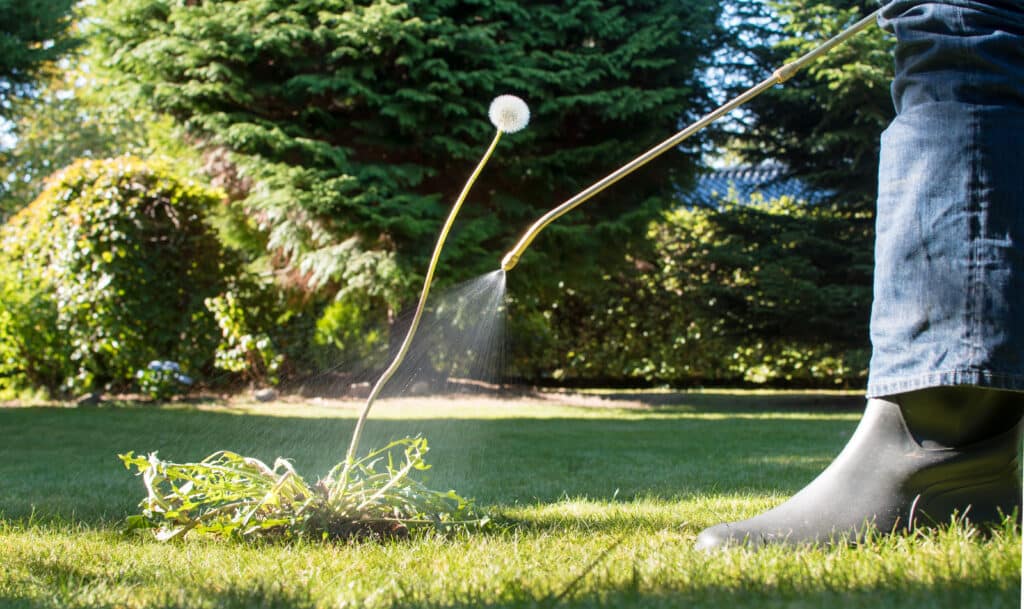
Now that you have learned a little bit about moss and its potential dangers/benefits, you have a choice. Either you will want to keep the moss and learn how to cultivate it, or you will want to know how to get rid of the pesky stuff as quickly as possible. If you favor the latter option, look no further!
Before you start to go crazy with Roundup or weedkiller, you have to know and remember something about moss. It is not like most weeds you might be used to getting rid of, which means several commonplace weedkillers will not make a dent in it. Moss reproduces through spores, rather than seeds and they lack any real roots.
Simply pulling moss out of your yard will not solve the problem either. It will be temporarily gone, yes, but really what you want to do is focus on changing the growing conditions of your lawn. Again, moss will not kill grass, but the conditions in which it thrives might. That said, your top priority should probably be to give your yard whatever it might lack, which we will discuss later on. For now, here are a few things that might help you get started.
The best time to start eradicating any unwanted lawn moss is when it is in the process of growing. This is likely to be during warm fall or winter rains or in early spring. Summertime is usually a much drier time and will not allow moss to thrive as well (moss needs a lot of moisture, but not a lot of nutrition and definitely not a lot of light).
Your best bet is probably to use an iron-based moss killer or one with iron substances. Iron is highly effective at keeping lawn moss under control, mostly because it draws out any or all moisture from the moss. As you know, moisture is essential for moss to thrive, and if iron is applied, the moss will slowly turn black and die.
You can also use limestone remedies, but exercise caution with these. Lime is only a good cure for moss if your soil is too acidic. If it isn’t, lime could actually make the problem worse.
Brands such as Lilly Miller and Scott’s are both great brands for getting rid of lawn moss. Moss Out has a product that comes in many variations such as fertilizer, liquid spray, and granules. Similarly, Scott’s Moss control with turf builder and MossEX are great for keeping your lawn healthy, happy, and moss-free. Fertilizing, if done carefully, could solve all your moss-related problems.
Moss often grows as a result of poor fertilization. Upping your game you could get rid of the moss just like that. However, keep in mind that you should obey all instructions carefully when using moss killer or fertilizer of any kind.
This is an especially important step for owners of cats, dogs, or small children. You do not want to use a product on your lawn that could put any of your little ones or furry friends in danger of being poisoned. Follow instructions carefully, and you’ll be fine.
If you are looking for a simpler, cheaper solution, you can even try using something as simple as dish soap. If you are only struggling with moss in small patches, mix two ounces of soap with at least a gallon of water (you ought to use gentle, milder dish soap for this).
As a general rule, you will need to use two ounces of soap to a gallon of water for every 500 square feet of lawn. Spray the affected areas generously. Within as little as 24 hours you could have dead or dying moss that can easily be raked up. Isolate the dying stuff so moss spores can’t find their way back to your yard. Wait for a few days before reseeding a bare spot since dish soap can keep the seeds from germinating.
Sound too good to be true? As it happens, there is one catch. Dish soap can also harm your healthy grass, so if you do choose this solution, be extra careful.
Strengthening your Lawn
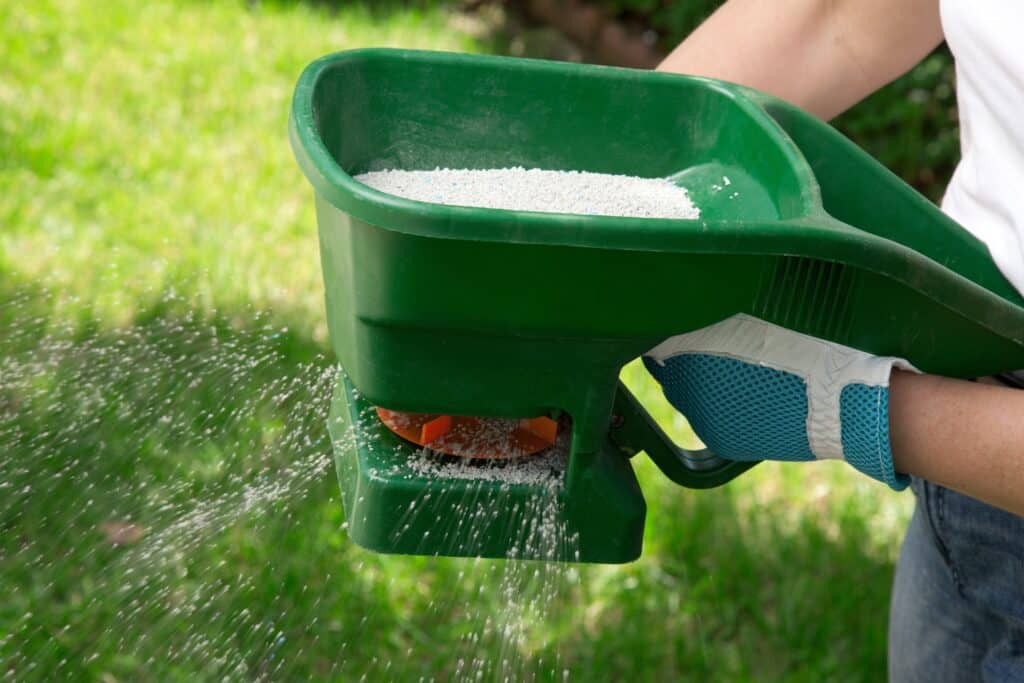
Now that we have talked about getting rid of the lawn moss, let’s talk about keeping it away for good. As mentioned before, most moss-related issues stem from your yard not being in great condition. Whether this means there is too little sunlight or an excess of moisture, how fast you get on the problem will likely determine how fast the moss goes away. Here are some helpful lawn care tips!
One of the first things you may want to do is get your soil tested. Doing so will tell you whether or not the pH needs a boost or not. You can do this by getting a soil tester from a local DIY store. You want to learn how acidic your soil is. Grass does not grow well in very acidic soil, but moss, on the other hand, does.
Grass needs a pH level of between 6.0 and 7.0 to thrive best. If your pH level is too low, using lime can help raise it which will make the pH rise. A test can also tell you if your soil is lacking in necessary nutrients that could help improve soil fertility. Deficiencies in phosphorus, potassium, or nitrogen can impair grass growth and give the moss a better opportunity to grow. Adding the right amounts of fertilizer can decrease those deficiencies and keep moss from growing.
Shade is another factor you are going to have to deal with. Too much of it will aid in the growth of moss far more than the growth of grass. Large amounts of shade in your yard are probably largely due to trees or large shrubs. If sunlight prevention is what’s causing the problem, consider pruning, trimming, or even cutting down any unneeded plants in your yard.
Another option, if you are attached to your trees/shrubs, is to sod your lawn with shade-tolerant grass. A few types of shade-tolerant varieties include rough bluegrass, St. Augustine, or fine fescue. You could also consider using shade-tolerant ground covers such as periwinkle, pachysandra, or sweet woodruff. If none of these is an option, your best bet is to cut down on the trees and shrubs.
Another issue you could be dealing with is using the wrong amount of water. For example, not enough water (which could occur during a seasonal drought) is going to leave your lawn brown and dry. Obviously, moss cannot grow in these conditions, but when the weather gets cooler and water starts coming back to the lawn, moss can start to establish itself.
The same is true of the opposite. If your lawn is receiving too much water, the soil will not drain well and that will create an ideal environment for moss to grow. If your soil drains poorly, consider getting it aerated. After aerating, add a rich turf builder/lawn soil to help improve your yard’s drainage.
Last but not least, keeping your yard in generally good condition is one of the best ways to keep moss from growing. Mowing and fertilizing regularly will encourage deep rooting for your grass which will keep it healthy. Healthy grass will not thin and will most definitely not allow moss to start growing.
How to Cultivate Moss
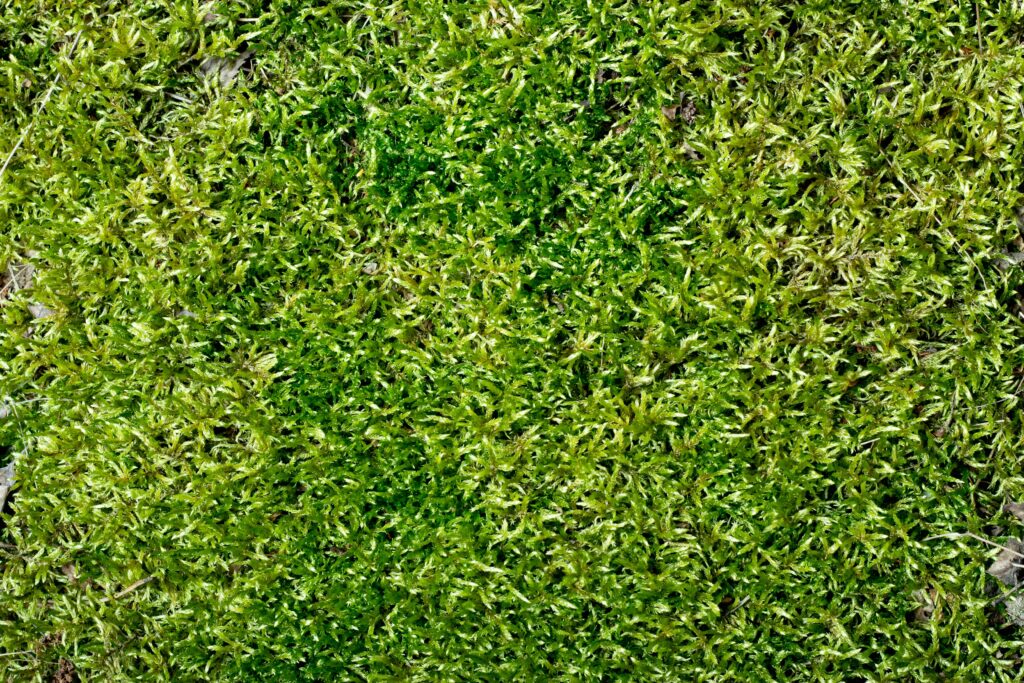
Unlike others, you may not want to get rid of moss at all. In fact, maybe you would prefer to get rid of the grass in your yard instead. Depending on where you live (and of course the condition of your yard), moss can be a great alternative to grass for your yard. Moss can be spongy, soft, and comfortable, plus it provides a lovely color pop which can be a nice addition to your property.
You can depend on moss not to go brown when it doesn’t receive enough sun. In addition, moss is pretty easy to care for. Having a carpet of moss rather than grass means you can save money on fertilizer, water, and time. Keep in mind, however, you need to cultivate the correct conditions in which moss can thrive.
Moss needs compound soil with a high level of acidity in which to grow at a healthy rate. While it does not require excessive moisture to grow, moss does need consistent levels of moisture to maintain its healthy appearance. It is also a bad idea to expose your moss to excess sunlight since too much heat can quickly dry out and kill it. The best way to ensure success for yourself in all your moss-growing ventures is to choose a variety of moss that is native to your specific area.
This means that you will not have to work against nature to cultivate it. Once you have chosen your moss and let it take hold of the soil, all you really need to do after that is to water and weed it. You should, however, prep the growth site adequately before getting started. This means clearing any plants or debris from the area that could prevent the moss from growing.
